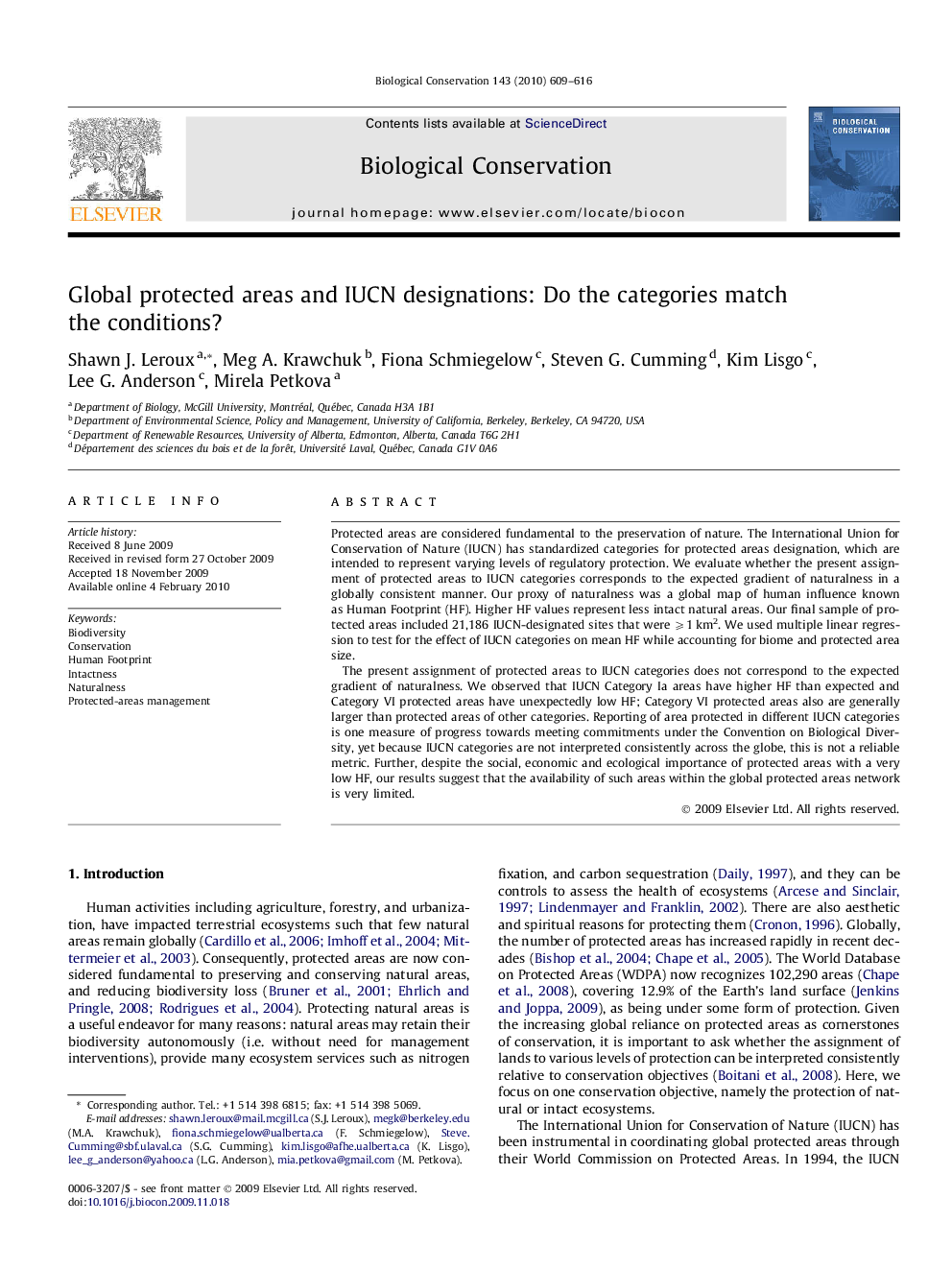| Article ID | Journal | Published Year | Pages | File Type |
|---|---|---|---|---|
| 4386109 | Biological Conservation | 2010 | 8 Pages |
Abstract
The present assignment of protected areas to IUCN categories does not correspond to the expected gradient of naturalness. We observed that IUCN Category Ia areas have higher HF than expected and Category VI protected areas have unexpectedly low HF; Category VI protected areas also are generally larger than protected areas of other categories. Reporting of area protected in different IUCN categories is one measure of progress towards meeting commitments under the Convention on Biological Diversity, yet because IUCN categories are not interpreted consistently across the globe, this is not a reliable metric. Further, despite the social, economic and ecological importance of protected areas with a very low HF, our results suggest that the availability of such areas within the global protected areas network is very limited.
Related Topics
Life Sciences
Agricultural and Biological Sciences
Ecology, Evolution, Behavior and Systematics
Authors
Shawn J. Leroux, Meg A. Krawchuk, Fiona Schmiegelow, Steven G. Cumming, Kim Lisgo, Lee G. Anderson, Mirela Petkova,
